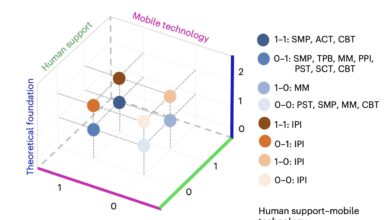Why Tech-Savvy Women Are Leading The New Wellness Renaissance

Women Leading the Way in the Evolving Longevity Space
In recent years, the longevity space has undergone a significant transformation, with women at the forefront of this movement. Gone are the days when Silicon Valley visionaries and male-driven biohackers dominated the scene. Now, women are reimagining aging as a vibrant, dynamic, and data-driven practice centered around hormonal intelligence, precision health, and embodied self-leadership.
Unlike the traditional focus on lifespan extension through performance metrics and cryotherapy chambers, women are pioneering longevity strategies that prioritize hormonal rhythms, cycle-based tracking, neuroendocrine balance, and emotional regulation. This shift acknowledges that healthy aging and lifespan trajectories vary between genders and require tailored approaches.
Research has highlighted the distinct neuroendocrine, metabolic, and immune pathways through which women experience aging. However, these factors have often been overlooked in traditional research and digital innovation pipelines. This gap not only has historical roots but also has significant biological and structural implications at the intersection of longevity, science, and women’s health.
The myth of the “average patient” has long influenced health research and medical technologies, neglecting the importance of sex-specific biology in the aging process. While women tend to live longer than men globally, they also face a higher burden of non-fatal chronic conditions and years lived with disability. Conditions such as autoimmune disease, osteoporosis, and Alzheimer’s disproportionately affect women, underscoring the need for a more gender-inclusive approach to longevity research and technology.
As the market evolves, female-led wellness companies are developing biohacking devices, diagnostics, and platforms that prioritize sex-specific physiology. These innovations are reshaping the longevity landscape and paving the way for personalized, adaptive healthspan strategies that cater to the unique needs of women.
From wearables like the Evie Ring, which tracks metrics while accounting for menstrual phase variations, to platforms like Tally Health, offering at-home biological age tests, women now have access to tools that align with their biology. These advancements represent a shift towards precision health that considers individualized factors like hormonal fluctuations, stress-hormone interactions, and dietary responses specific to women.
Cycle syncing has emerged as a key strategy in women’s longevity practices, leveraging hormonal rhythms to optimize training, productivity, and recovery. By aligning behaviors with their natural endocrine system, women can enhance energy, cognition, performance, and emotional resilience. This neurobiological precision offers a deeper understanding of how hormonal fluctuations impact mitochondrial health, neuroplasticity, and overall well-being.
Despite progress in bridging the gender gap in health tech, there is still work to be done to ensure that longevity technologies are inclusive and tailored to women’s needs. By centering female physiology as the default blueprint for next-generation innovations, we can unlock the full potential of precision medicine and personalized longevity solutions.
In the wellness renaissance of 2025, women are not just optimizing their health; they are revolutionizing the way we approach aging. By embracing tools that respect their rhythms, data that reflect their realities, and systems that prioritize cyclical intelligence, women are leading a new era of longevity that is data-driven, intuitive, and empowering. It’s time to trust our biology and embrace a future of sustainable health guided by women-driven leadership.





